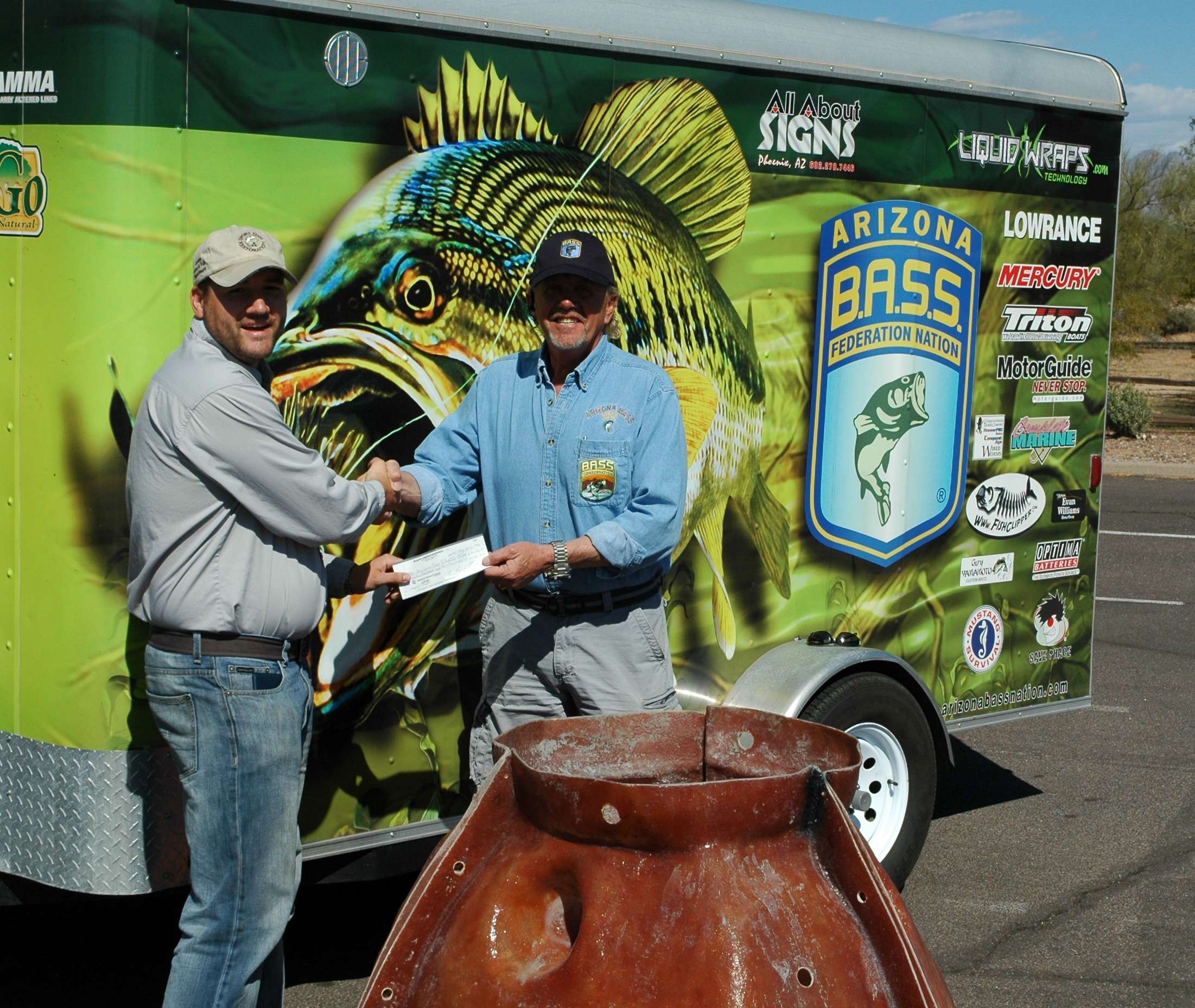
MESA, Ariz. — The effort to enhance Arizona’s bass fisheries with man-made habitat received a big boost recently, when the Arizona B.A.S.S. Federation Nation (ABFN) was awarded a $12,600 grant.
That money from Arizona Sportsmen for Wildlife Conservation (ASWC) will be used to assist Arizona Game and Fish (AGF) in making concrete Reef Balls.
Reef Balls are the Arizona chapter’s answer to the state’s lack of habitat in its fisheries. Made of 3/4 yard of concrete, a Reef Ball looks like a half-sphere of Swiss cheese, according to Chris Cantrell, AGF fishery manager. He added that ecosystems form in and around the balls, which were popularized for marine fisheries. “It’s really good habitat that’s there for a long time,” said Cantrell. “A Reef Ball is thought to take more than 500 years of saltwater.”
Compare that to five to 20 years for most artificial habitat.
“Money will be spent to create additional molds to allow bulk concrete purchases to mass produce Reef Balls in one fell swoop instead of hand-mixing the concrete,” said Don McDowell, ABFN conservation director.
“This will allow us to build 12 additional three-piece molds,” he continued, adding that this is the first time that the organization has provided a grant for fish habitat.
“Looks like our fish are getting much needed new furniture much sooner than we had hoped for,” he continued. “Our deepest gratitude to the ASWC.”
Sometime this fall, Saguaro Lake probably will be the next fishery to receive Reef Balls, which ABFN volunteers will help build, load, offload and place. The first was Tempe Town Lake.
Other funding so far has included a $910 donation from Midweek Bass Anglers from the club’s Holiday Open.
“Once we’re to the production phase, we can go anywhere,” Cantrell continued. “The concrete, renting the forklifts, moving the habitat, getting volunteers — all of that will be the easy part. The hard part is getting the molds created.”
Lack of habitat in Arizona waters is the No. 1 limiting factor for anglers.
“It’s like a bathtub out there,” Cantrell said of Arizona’s impoundments.
“We don’t have a renewable resource,” McDowell added. “We have to babysit the fish. And we have to take care of the habitat before we can have the fish.”
This article is part of the Habitat Improvement segment of the larger report, 2011 Annual Achievements in B.A.S.S. Conservation.

